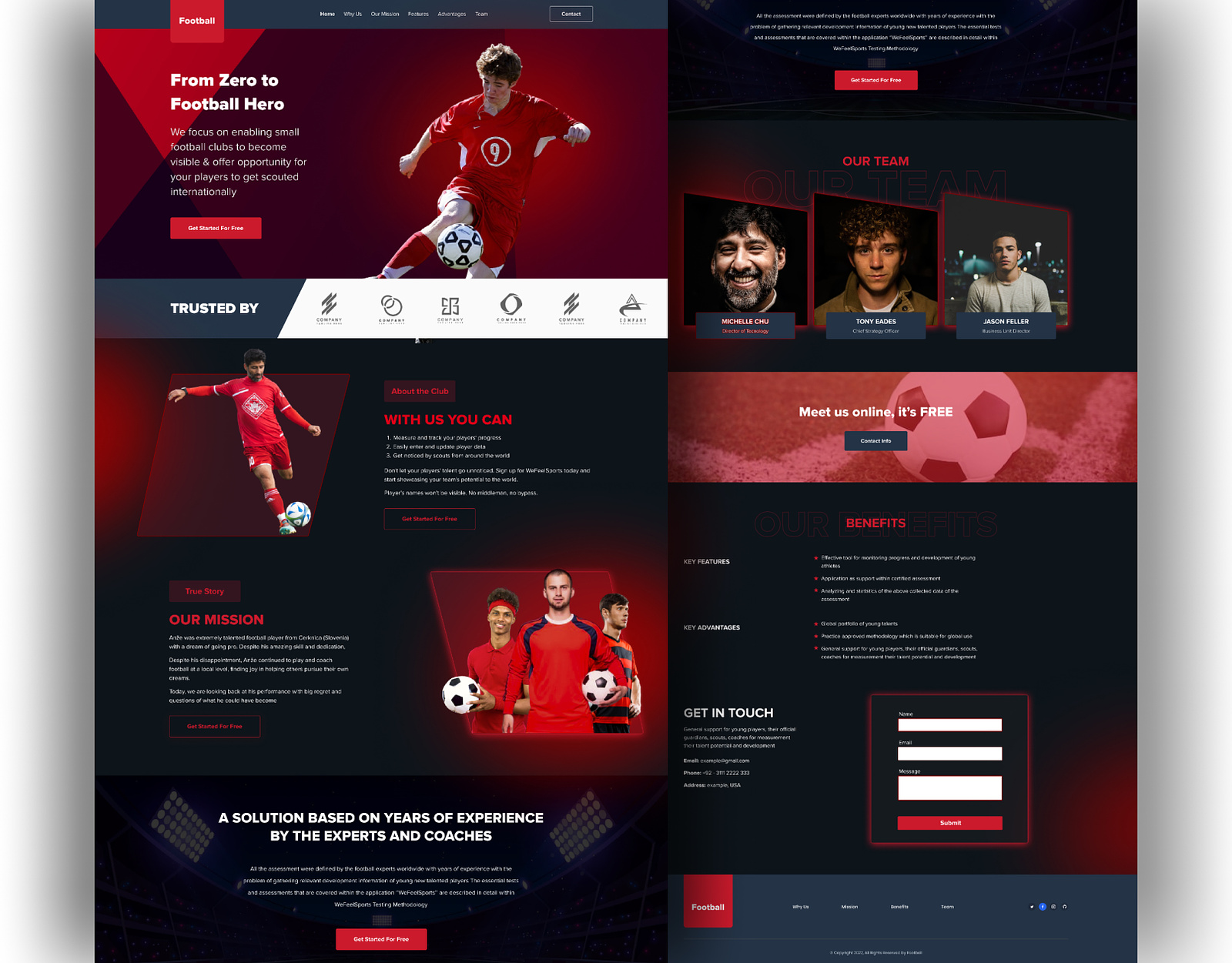The Essential Investment

Understand Costs and Necessities
In today’s digital age, a website is more than just a digital footprint; it’s a vital platform for branding, marketing, and engaging with your audience. However, the journey from concept to a fully functional website involves various costs and considerations. This blog post will demystify the expenses associated with website operation, explain why they are necessary, and outline industry-standard practices for managing these costs effectively.
The Cost Breakdown
Domain Registration
Deep Dive Navigating Costs and Choices
Domain registration is a critical first step in establishing your online presence, acting as your unique address on the internet. This process involves selecting a domain name and a top-level domain (TLD) extension (like .com, .org, or .net), and then registering it through a domain registrar. Understanding the nuances of domain registration, including the factors that influence costs, can help you make informed decisions that align with your brand and budget.
Understanding TLDs and Their Impact on Cost
The TLD, or the segment that follows your domain name (e.g., .com, .org, .net), significantly impacts the cost of your domain registration. Here's a brief overview:
- .com: As the most recognized and sought-after TLD, .com domains are versatile and suitable for various types of websites, especially commercial ones. Due to their popularity, they can sometimes be more expensive and harder to obtain if your desired name is already taken.
- .org: Traditionally associated with non-profits and organizations, .org domains convey trust and credibility. They are often chosen by charities, educational platforms, and open-source projects.
- .net: Originally intended for network infrastructure providers, .net is now a popular alternative to .com for businesses, tech startups, and creative projects.
- Niche TLDs: Recent years have seen the introduction of a plethora of niche TLDs, like .photography, .tech, or .blog. These can be great for standing out and immediately communicating your website's focus, but they might be less universally recognized than traditional TLDs.
Factors Influencing Domain Registration Costs
Several factors contribute to the variability in domain registration costs:
Popular TLDs like .com often command higher prices due to demand. Conversely, less common or newer TLDs might be cheaper to encourage adoption. Domain names that are short, easy to remember, and contain popular keywords can be more expensive. In some cases, premium domains are sold at significantly higher rates. Different registrars offer varying prices and packages, including additional services like privacy protection, which can hide your personal information from the public domain registry. Initial registration costs might be low as a promotional offer, but renewal rates can be higher. It's important to check the long-term costs. If you decide to transfer your domain to a different registrar in the future, there might be associated fees.
Choosing the Right Domain and Registrar
When selecting your domain and registrar, consider the following:
Brand Alignment: Choose a domain name and TLD that reflect your brand, are easy to spell, and memorable.
Research: Use tools provided by registrars to check the availability of your desired domain name and explore alternatives if it's taken.
Read the Fine Print: Be aware of the total cost, including any additional fees for services like privacy protection or email hosting.
Registrar Reputation: Choose a reputable registrar with reliable customer support, straightforward pricing, and good reviews from users.
Future-Proofing: Consider registering multiple TLDs or variations of your domain name to protect your brand and prevent others from purchasing similar domains.

Navigating the World of Web Hosting
Understanding Your Options
Web hosting is a crucial service that makes your website accessible on the internet. It involves renting space on a server where your website's files are stored and served to users when they type in your domain name. The variety of web hosting plans available can cater to the needs of different websites, from small personal blogs to large e-commerce platforms. Let's delve into the nuances of web hosting, including the types of hosting available and the factors that influence hosting plan costs.
Types of Web Hosting
In shared hosting, your website resides on a server with many other websites. Resources such as CPU, memory, and disk space are shared among all the websites on that server. This is the most cost-effective option, ideal for small websites with low to moderate traffic. Prices typically range from $3 to $10 per month.
Virtual Private Server (VPS) hosting provides a middle ground between shared hosting and dedicated hosting. Although your site shares a server with other sites, it has its own dedicated portion of the server's resources. This offers more control and better performance than shared hosting and is suitable for websites with medium traffic. Costs for VPS hosting usually start around $20 to $60 per month.
With dedicated hosting, you rent an entire server for your website. This offers maximum control, flexibility, and performance but comes at a higher cost, starting at $100 per month. It's best for large, high-traffic websites that require extensive resources and security.
Cloud hosting distributes your website's files across multiple interconnected servers, allowing for greater flexibility and scalability. It's ideal for websites with fluctuating traffic, as it can easily accommodate spikes in traffic without downtime. Pricing is often based on the resources you use rather than a flat monthly fee.
Managed hosting services take care of the technical aspects of running a server, including security, maintenance, and updates. While this can be available for various types of hosting, it's particularly common with VPS and dedicated servers. It's ideal for those who prefer to focus on their business rather than server management.
Factors Influencing Hosting Costs
The more resources (CPU, RAM, storage, bandwidth) your website requires, the higher the cost. Sites with high-resolution images, videos, and large amounts of traffic consume more resources. Higher-priced plans often guarantee better uptime, faster load times, and more reliable performance, which are crucial for user experience and SEO. Quality customer support can be a deciding factor, especially for those with limited technical expertise. Premium support might increase costs but offers peace of mind. The ability to easily upgrade your hosting plan as your site grows is vital. Some providers make scaling seamless, but it might come at a higher base cost. Features like automated backups, advanced security measures, and built-in content delivery networks (CDNs) can add to the cost but provide significant value.
Choosing the Right Web Hosting Plan
Choosing the ideal web hosting plan requires a careful consideration of your website's requirements against the costs involved. Start by understanding your site's resource demands, expected visitor volume, and technical needs. Look for a hosting solution that allows for seamless scalability to accommodate your website's growth. Websites that conduct e-commerce transactions or handle sensitive information should emphasize the importance of enhanced security features. Additionally, ensure that the hosting provider you select offers reliable, preferably 24/7, support services to promptly address any issues that may occur.

Design and Development
Crafting Your Digital Brand
The design and development phase is where your website's concept comes to life. This stage shapes the user experience, functionality, and aesthetic appeal of your site, playing a crucial role in how your brand is perceived online. The costs associated with design and development can vary widely based on several factors, including the complexity of your website, the level of customization you desire, and the path you choose for the development process.
DIY Website Builders
For those with a tight budget or simple website needs, DIY website builders like Wix, Squarespace, and Weebly offer a user-friendly solution. These platforms provide a variety of templates that users can customize to create their websites without any coding knowledge. Take note that when choosing a service like this for your website, you are limiting yourself for expansive design and implementation strategies.
- Cost: Most website builders offer tiered pricing plans, starting at around $10 to $30 per month, which typically includes hosting, a selection of templates, and basic features.
- Pros: They are cost-effective, easy to use, and come with a range of pre-designed templates. Many also offer drag-and-drop interfaces, making them accessible to those without technical expertise.
- Cons: Customization is limited to the options available within the builder. For more complex features or unique designs, a website builder might not suffice. Additionally, migrating your site to another platform later can be challenging.
Professional Design and Development
For businesses requiring a unique, branded website with specific functionalities, hiring professional designers and developers is the way to go. This option can range from freelancers and small agencies to large design firms, each offering different levels of service and expertise.
Choosing the Right Web Hosting Plan
- Cost: Prices can vary significantly based on the project's complexity and the service provider's expertise. A basic website might cost a few thousand dollars, while more sophisticated e-commerce sites or web applications can reach tens of thousands or more.
- Pros: Professional design and development ensure a unique, tailor-made website that aligns with your brand identity and meets specific functional requirements. Experts can also provide valuable insights into best practices, SEO, and user experience.
- Cons: The primary drawback is the cost, which can be prohibitive for startups or small businesses. The process also requires more time and involvement in terms of project management and decision-making.
Balancing Cost and Quality
When deciding between a DIY approach and professional services, consider your website's goals, audience, and the role it plays in your overall business strategy. A well-designed and developed website can serve as a powerful marketing tool, generate leads, and build brand loyalty.
For Startups and Small Businesses: If budget constraints are tight, consider starting with a website builder and plan to invest in professional design and development as your business grows.
For Established Businesses: A professionally designed website can offer a competitive edge, showcasing your brand's uniqueness and catering to specific customer needs.

Maintenance and Support
The Vital Role of Maintenance
Maintaining a website is an ongoing commitment that ensures the site remains functional, secure, and up-to-date. This process encompasses a range of activities, from content updates and security checks to technical optimizations and support. The costs associated with maintenance and support can vary widely based on the website's complexity, the level of automation, and the type of support required.
Understanding Website Maintenance
Maintaining a website is an ongoing journey that encompasses a variety of essential tasks to ensure it remains engaging, secure, and high-performing. At the heart of this process is the continuous refreshment of content. By regularly updating blog posts, product details, and service offerings, you not only captivate your audience but also bolster your SEO efforts. Equally crucial is the vigilance in enhancing security protocols and software to shield your site from emerging threats, involving routine updates to your CMS, plugins, and integrations.
Performance optimization is another key pillar, involving diligent monitoring and tweaking of your site's load times and overall efficiency. This might entail streamlining images, harnessing caching technologies, and reassessing your hosting arrangements to ensure they provide the necessary firepower. Keeping all website components, including the CMS, themes, and plugins, up-to-date is paramount for seamless functionality and compatibility.
Moreover, establishing a robust backup and recovery strategy is indispensable, safeguarding your valuable data and ensuring minimal downtime. Complementing these technical endeavors is the analytical aspect—meticulously tracking website traffic and user behavior to unearth insights that drive informed updates to content and design. Together, these activities form the backbone of effective website maintenance, harmonizing to keep your digital presence vibrant, secure, and ahead of the curve.
Factors Influencing Maintenance Costs
Website Complexity: More complex sites with numerous pages, e-commerce functionalities, or custom features require more extensive maintenance efforts.
Frequency of Updates: Websites that demand frequent content or product updates will incur higher maintenance costs.
Security Needs: Sites handling sensitive information or transactions need robust security measures, which can increase maintenance expenses.
Technical Support: Access to prompt and reliable technical support for resolving issues and implementing updates is a critical component of website maintenance.
Choosing the Right Web Hosting Plan
- Cost: Prices can vary significantly based on the project's complexity and the service provider's expertise. A basic website might cost a few thousand dollars, while more sophisticated e-commerce sites or web applications can reach tens of thousands or more.
- Pros: Professional design and development ensure a unique, tailor-made website that aligns with your brand identity and meets specific functional requirements. Experts can also provide valuable insights into best practices, SEO, and user experience.
- Cons: The primary drawback is the cost, which can be prohibitive for startups or small businesses. The process also requires more time and involvement in terms of project management and decision-making.
The Spectrum of Maintenance and Support Services
The spectrum of maintenance and support services for websites spans from the foundational to the all-encompassing, catering to a wide range of needs and complexities. At the foundational end, basic maintenance packages provide the essentials—routine updates, security audits, and regular backups, making them an ideal fit for smaller, less complex websites. These packages are typically priced between $50 to $100 per month, offering a cost-effective solution for ensuring the fundamental upkeep of your digital presence.
For websites with greater complexity or those commanding more extensive care, comprehensive maintenance plans step in to fill the gap. These more robust packages deliver a broader array of services including, but not limited to, priority support, in-depth analytics insights, and targeted performance enhancements. Tailored for larger sites, the investment for such thorough care can range from several hundred to over a thousand dollars monthly, reflecting the depth and breadth of support provided.
On the other end of the spectrum, on-demand support presents a flexible alternative, allowing businesses to seek assistance as and when required. This model can be particularly economical for websites that generally demand little upkeep, offering the agility to address issues or updates without a recurring fee. However, it's worth noting that relying solely on on-demand support could lead to higher expenses in the face of unforeseen challenges or significant updates, making it a balance of cost-efficiency and readiness.
Balancing Cost, Efficiency, and Security
Selecting the appropriate tier of maintenance and support for your website is a pivotal decision that demands careful contemplation. A key strategy to optimize this aspect is embracing automation for routine upkeep tasks. By leveraging tools and plugins that handle regular backups and security assessments, you can significantly curtail maintenance expenses without compromising on efficiency.
Security should always take precedence in your maintenance plan. The digital landscape is fraught with potential threats, and every website—regardless of its size—stands vulnerable. Ensuring that your site benefits from consistent security updates is essential, serving as a fundamental shield against the ever-evolving cyber risks.
Furthermore, it's important to adopt a forward-thinking approach, anticipating the needs of your website as it evolves. With growth comes increased demands in traffic, content volume, and functionality, all of which necessitate a proportional escalation in maintenance efforts. Planning for this expansion ensures that your website remains robust, responsive, and reliable, ready to accommodate its future phases seamlessly.

SEO and Marketing
Fueling Your Website's Visibility and Growth
In the digital landscape, having a website is just the beginning. The real challenge lies in attracting visitors and converting them into customers or followers. This is where SEO (Search Engine Optimization) and digital marketing come into play, serving as crucial drivers for increasing your site's visibility, traffic, and engagement. Let's explore the depth of SEO and marketing, the services involved, and the factors that influence their costs.
Understanding SEO
Search Engine Optimization (SEO) is the art and science of enhancing your website's visibility in search engine results pages (SERPs) for queries related to your content. SEO is multifaceted, involving a variety of strategies and tactics to improve your site's ranking.
On-Page SEO focuses on optimizing the content and structure of individual web pages. Key elements include ensuring high-quality, keyword-rich content, optimizing HTML tags (such as title, meta descriptions, and headers), and refining image attributes for better search engine recognition and user engagement.
Off-Page SEO involves activities conducted outside your website that influence its standing in search results. A significant part of this is building a network of backlinks from reputable sites, which acts as endorsements for your content, enhancing your site's authority and reputation.
Technical SEO addresses the backend and technical aspects of your website to meet search engines' criteria for a high-quality site. This includes optimizing site speed, ensuring mobile responsiveness, improving indexation and crawlability, structuring site architecture efficiently, and bolstering website security. Together, these SEO components work in harmony to boost your website's rankings, making it more visible to your target audience.
Delving into Digital Marketing
While SEO focuses on organic traffic, digital marketing encompasses a broader range of strategies to reach and engage your target audience, including:
Content Marketing: Creating and distributing valuable, relevant, and consistent content to attract and retain a clearly defined audience.
Social Media Marketing: Using social media platforms to connect with your audience, build your brand, increase sales, and drive website traffic.
Email Marketing: Sending targeted and personalized messages to your email subscribers to nurture leads and promote your products or services.
Pay-Per-Click (PPC) Advertising: Buying visits to your site through ads, with the most common being Google AdWords. You pay a fee each time one of your ads is clicked.
Influencer Marketing: Collaborating with influencers in your industry to expose your brand to a larger audience.
Factors Influencing SEO and Marketing Costs
The cost of SEO and marketing initiatives is influenced by several critical factors, each playing a unique role in shaping the overall investment required for your website's online presence.
The Scope of Work is a primary factor, where the size and intricacy of your website, the level of competition within your sector, and your targeted audience reach (be it local or global) significantly impact the cost. A more extensive, complex site in a competitive industry aiming for a broad audience will naturally require a more substantial investment.
The Quality of Services provided by your chosen agency or consultant is another crucial determinant. The expertise and industry reputation of your service provider are directly proportional to their pricing, with renowned professionals known for their track record and results typically commanding premium rates.
Content Creation stands at the heart of effective SEO and marketing, where the demand for original, engaging content necessitates a dedicated budget. The investment in professional content creation, essential for captivating your audience and boosting SEO, adds a significant dimension to the overall cost.
Lastly, the Paid Advertising Budget, particularly for pay-per-click (PPC) campaigns and other paid marketing tactics, directly impacts your financial outlay. Higher advertising spends can amplify traffic and visibility but at the cost of increased expenditure, necessitating a careful balance between budget allocation and desired outcomes.
The Spectrum of Maintenance and Support Services
The spectrum of website maintenance and support services spans from foundational care to all-encompassing support, tailored to the diverse needs of different websites.
At the foundational level, Basic Maintenance Packages provide the essentials—routine updates, security audits, and data backups, making them a perfect match for smaller or less complex websites. These packages are typically priced between $50 to $100 per month, offering an affordable solution to ensure the ongoing health and security of your digital presence.
For websites with greater complexity or those requiring more robust attention, Comprehensive Maintenance Plans step in. These plans encompass a wider array of services, including but not limited to, priority support, in-depth analytics insights, and focused performance enhancements. Designed to cater to the needs of larger, more intricate sites, the investment for such thorough care ranges from several hundred to over a thousand dollars monthly, reflecting the depth and breadth of support provided.
Alternatively, On-Demand Support offers a flexible model, ideal for businesses seeking assistance as and when required. This approach can be particularly cost-effective for websites that generally demand low maintenance, allowing for the flexibility to address issues or implement updates without the commitment to a recurring fee. However, it's noteworthy that relying solely on on-demand support could lead to higher expenditures in the face of unforeseen challenges or significant updates, underscoring the importance of weighing the cost benefits of each model against your website's specific needs.
Investing in SEO and Marketing
Viewing SEO and marketing expenditures as pivotal investments in your business's expansion is essential, rather than mere costs. This perspective shift is vital for several reasons:
Firstly, the Long-Term Value of SEO is undeniable. Unlike some short-term strategies, SEO builds upon itself over time, creating a snowball effect where enhanced search rankings drive increased traffic, which in turn can lead to more conversions and brand visibility. This compounding effect underscores SEO's role as a cornerstone in your long-term growth strategy.
Secondly, the need for Customized Strategies cannot be overstated. Each business has its own set of unique qualities, market challenges, and opportunities. A bespoke SEO and marketing approach, tailored to your specific business context, can more effectively navigate these nuances, ensuring your efforts are precisely targeted and more likely to yield significant results.
Lastly, the Measurable ROI of digital marketing initiatives stands out. The digital realm offers unparalleled opportunities to track and analyze the performance of your marketing efforts in real-time. This ability to quantify your marketing impact allows for informed decision-making and strategic adjustments, ensuring your investment is always aligned with your business objectives and market dynamics.

Enhancing Your Website with Additional Features
A Cost-Benefit Analysis
In the realm of web design and development, additional features such as e-commerce capabilities, premium plugins, and specialized content management systems (CMS) can significantly enhance your website's functionality and user experience. However, these enhancements come at a cost, and it's crucial to weigh their benefits against the investment required. Let's delve into these additional features, exploring their potential costs and the value they add to a website.
E-Commerce Capabilities
Transforming your website into an online store involves integrating e-commerce functionalities that allow for product listings, shopping carts, checkout processes, and secure payment gateways.
- Cost Factors: The complexity of your product line, the chosen e-commerce platform (like WooCommerce for WordPress, Shopify, or Magento), and any custom features or integrations can influence the overall cost. Basic e-commerce functionalities might start from a few hundred dollars for plugin-based solutions, while custom-built e-commerce sites can escalate to several thousand dollars.
- Value Added: E-commerce capabilities enable businesses to expand their market reach, provide convenient shopping experiences, and directly increase revenue through online sales.
Premium Plugins
The investment in premium plugins for your website is influenced by several cost factors, yet these enhancements can significantly boost your site's overall effectiveness. Although numerous plugins are accessible at no cost, opting for premium versions can unlock a broader spectrum of features, superior customer support, and consistent updates to ensure compatibility and security. The pricing for these premium offerings can vary, from one-time payments ranging between $20 to $100 to annual subscriptions that may reach into the hundreds, with the variation largely dependent on the plugin's complexity and the breadth of functionality it provides.
The value that premium plugins add to your website is substantial. By elevating aspects such as performance, user experience, and security, these plugins not only contribute to creating a more engaging and secure environment for your visitors but can also play a crucial role in improving your site's search engine rankings. This enhancement in user engagement and SEO can, in turn, drive more traffic to your site, potentially leading to increased conversions and furthering your business objectives.
Specialized Content Management Systems
While popular CMS like WordPress offer broad functionality, some websites require specialized CMS tailored to specific industries or content types, such as Drupal for complex, data-intensive sites or Squarespace for visually-oriented sites.
- Cost Factors: Opting for a specialized CMS can involve higher setup costs, especially if custom development is required to meet specific needs. Costs can range from a few hundred to thousands of dollars, depending on the level of customization and the CMS platform's licensing fees.
- Value Added: A specialized CMS can offer a more tailored experience for managing and presenting content, leading to better efficiency, user experience, and alignment with business goals.
Balancing Costs and Benefits
Incorporating e-commerce functions, premium plugins, or a bespoke content management system (CMS) into your website warrants a thoughtful evaluation of both their immediate and extended benefits to your enterprise:
Direct Revenue Generation is a tangible benefit, particularly with e-commerce integrations, which provide a straightforward mechanism for online sales and revenue streams. This aspect allows for a relatively clear assessment of return on investment (ROI), as the direct financial gains from sales can be easily quantified and weighed against the initial and ongoing costs of the e-commerce implementation.
Operational Efficiency is another critical area of value. Utilizing advanced tools and plugins that enhance the management of your website, streamline content production, or refine customer engagement processes can lead to significant savings in time and operational costs. Over time, these efficiencies can contribute to a leaner, more effective operation, allowing you to allocate resources more strategically within your business.
Competitive Advantage is achieved through the adoption of specialized features that differentiate your website from those of your competitors. By offering unique functionalities or a superior online experience, you can attract and retain a more significant share of your target market. This distinct positioning not only enhances brand recognition but can also lead to increased customer loyalty and market share, further underlining the strategic value of these website enhancements.
Investing in additional website features involves a careful consideration of costs versus benefits. E-commerce capabilities, premium plugins, and specialized CMS can substantially enhance your website's functionality, user experience, and potential for revenue generation. However, it's crucial to align these investments with your overall business strategy, ensuring that the added features support your goals and offer a tangible return on investment. By thoughtfully integrating these enhancements, you can create a more robust, efficient, and competitive online presence.

The Necessity of These Costs
Investing in key areas such as design, SEO, hosting, and maintenance is essential for the success of a website for various reasons. A well-designed and SEO-optimized website enhances visibility by ranking higher in search engine results, which leads to increased traffic. Additionally, professional design and reliable hosting enhance your brand's credibility and build trust with your audience. Moreover, focusing on creating fast, user-friendly websites improves user experience, which is critical for higher engagement and conversion rates. It's also important to ensure regular maintenance and updates to safeguard your site against vulnerabilities and cyber threats, further emphasizing the necessity of these costs.
Adopting industry-standard practices for managing website costs is crucial for maximizing efficiency and effectiveness. Strategic planning is fundamental; by defining clear objectives for your website, you can avoid unnecessary expenses on features that don't align with your goals. It's also beneficial to opt for scalable solutions that accommodate growth, ensuring that the services you choose can expand as your website does. Investing in high-quality hosting and professional design from the start can prevent costly issues later on, and regular audits of your website's performance, security, and SEO can help ensure that you're achieving a good return on your investments.
Furthermore, leveraging cost-effective tools and resources can significantly reduce expenses without compromising quality. Open-source platforms like WordPress offer extensive functionalities at a lower cost, making them an excellent choice for many website owners. Additionally, outsourcing specific tasks such as SEO and content creation to experts can be more cost-effective than hiring full-time staff, allowing you to benefit from specialized skills and knowledge while controlling costs. By adhering to these industry standards and practices, website owners can create and maintain successful, high-performing websites that meet their business objectives while managing costs effectively.
Web Design
We offer custom web design solutions that fit your budget.
Hosting
Need help finding where to home your website? We can host it or consult / setup or migrate your website to a hosting provider that fits your needs.
Optimization
SEO is important but can be a costly mistake if done incorrectly. We can guide you through the process.



